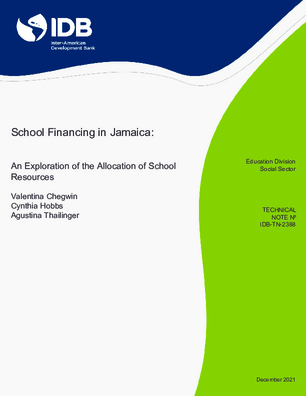School Financing in Jamaica: An Exploration of the Allocation of School Resources
Date
Dec 2021
Education spending has increased significantly in Latin America and the Caribbean over the last few decades and Jamaica is no exception. The country has prioritized education within its policy agenda, with spending consistently above the regions average for more than 10 years. Despite these efforts, closing existing learning gaps between advantaged and disadvantaged students has remained a challenge. This study examines how resources are allocated to Jamaican schools and explores ways to promote equity through adjustments in education spending. Findings suggest that lower socio-economic schools rely mainly on public funds, while most high socio-economic schools income comes from donations from different sources, which can be used more flexibly. Such contributions are not always quantifiable or consistently described in the MOEYIs registries, which distorts the equitable allocation of public resources. Moreover, the funding formula used by the MOEYI is relatively new and no impact evaluation studies have been carried out to measure if it effectively responds to equitable education opportunities across schools. More information on schools access to and sources of resources would allow the MOEYI to determine more accurately whether the funds allocated to each school are sufficient to meet their real needs.




